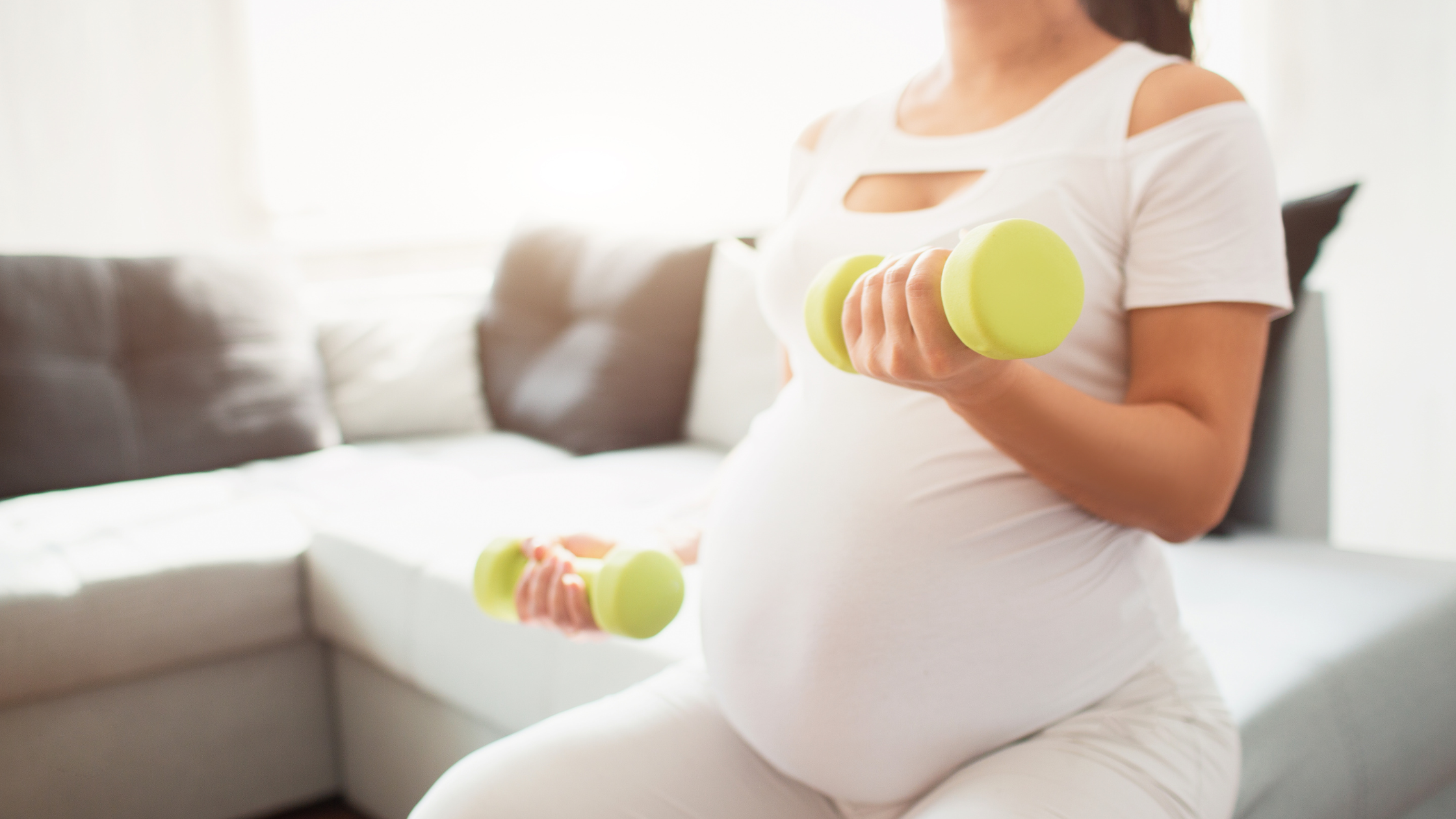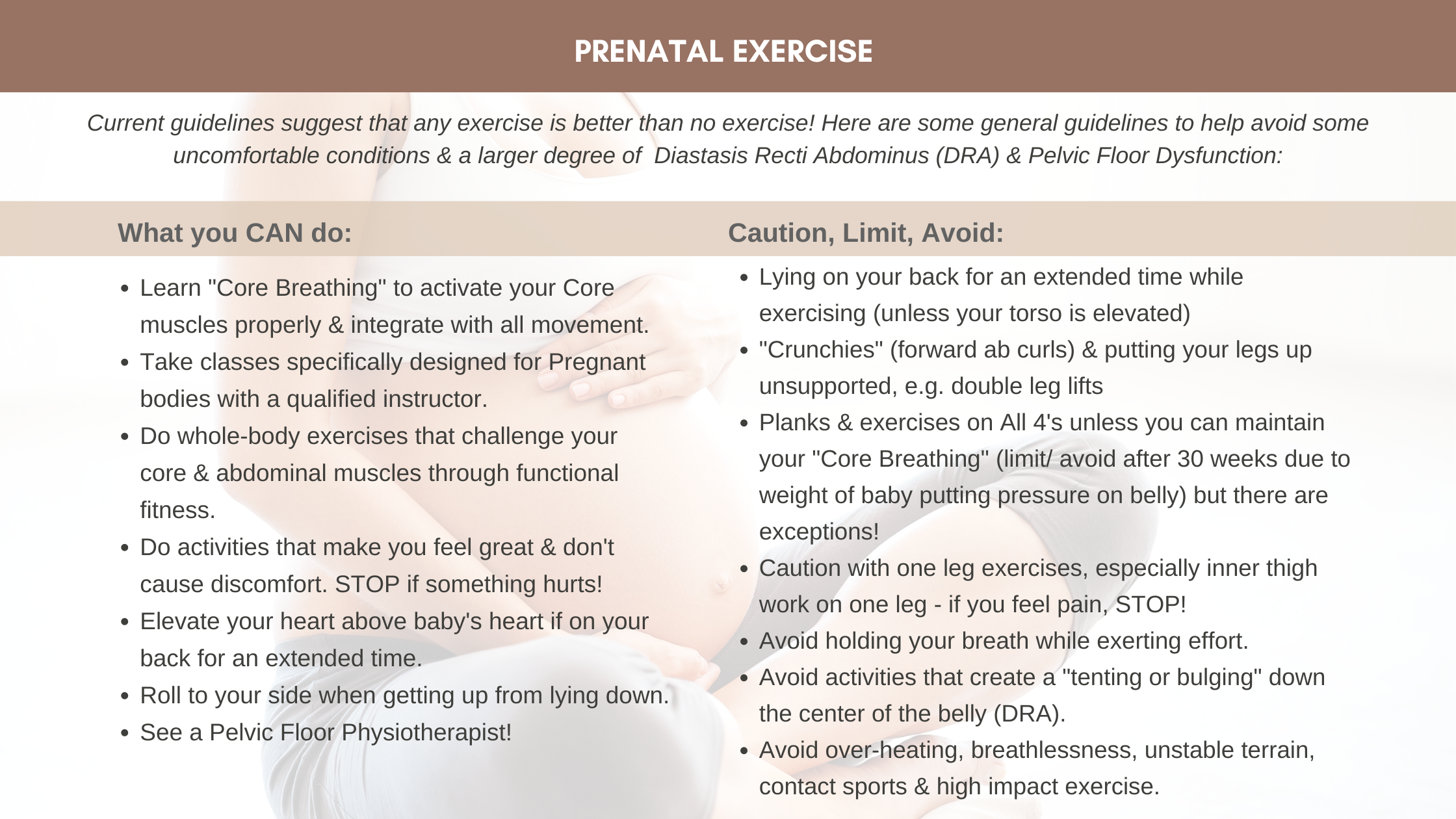Prenatal Exercise Guidelines
One of the most asked questions I get is, "What exercises are safe to do during pregnancy?"
We know there are many benefits to exercising during pregnancy. Still, changing the focus and types of workouts, one does to accommodate a growing belly and shifting centre of gravity is a great idea. The emphasis during pregnancy should be on maintaining or building strength for labour and birth and preparing for the high demands of a newborn. Exercises should feel good on your body and help you stay physically well throughout your pregnancy.
A few Common Issues in Pregnancy:
Here's a little context and information about why we have guidelines for exercise during pregnancy. Some prevalent issues during pregnancy that exercising without awareness can cause or exacerbate. Ideally, we don't want to contribute to or increase these issues.
Diastasis Recti Abdominus (DRA):
DRA is stretching of the connective tissue (linea alba) between the two sides of the abdominals, causing separation to the right and left of the centre of the belly. While 100% of pregnant bodies will experience some degree of DRA by the end of pregnancy, our goal is not to increase the degree of DRA with unsafe movement patterns. Traditional abdominal work, excessive extension (backbends), planks and exercising on All 4's can contribute to DRA due to the amount of force and stretch put on the linea alba.
Pelvic Floor Dysfunction:
The muscles of your Pelvic Floor are part of your Inner Core. With the added weight of a growing baby belly, extra pressure is put on these muscles, and they can become too tight trying to support or too loose, unable to keep up, causing them to be dysfunctional. Symptoms of Pelvic Floor Dysfunction include leaking urine (even just a little!), feeling like you have the urge to urinate more than usual, constipation, bowel incontinence (including gas), and low back, hip or pelvic pain.
Pubis Syphasis Dysfunction (PSD):
PSD is when the ligament at the pubic bone area becomes uncomfortable or painful due to pulling, twisting or sheering of the two sides. Exercises that require you to be on one leg or squeeze your inner thighs together can contribute to various forms of PSD. If it causes pain, stop! Consider doing inner thigh exercises with both legs working together rather than one leg squeezing and one leg stabilizing.
Other considerations:
Breathlessness, Dizziness, Balance, Elevated Heart Rate, Over stretching & Overheating:
With a growing belly and shifting centre of gravity, losing one's balance, even with simple activities, is common. The body uses hormones to help soften and relax the ligaments around joints to accommodate the growing baby, and these hormones make it easy to over-stretch and cause injury. Additionally, a pregnant body has approximately 30-50% more blood volume by the third trimester causing the heart and the respiratory system to work harder, even at rest. Work Smart, Not Hard!! Easy does it, but get it done!
With these common issues in mind, here are some very general guidelines that you can follow if you are exercising without the knowledge and mindful eye of a qualified instructor.
Check out this quick "Core Breathing" tutorial to activate your inner core effectively.
Are you looking for safe and challenging workouts? Check out my Movement Library, get on the waiting list for virtual group classes or book in for some one-on-one sessions Move Well, Feel Well!
Would you like more prenatal movement tips, leave a comment or be in touch!


